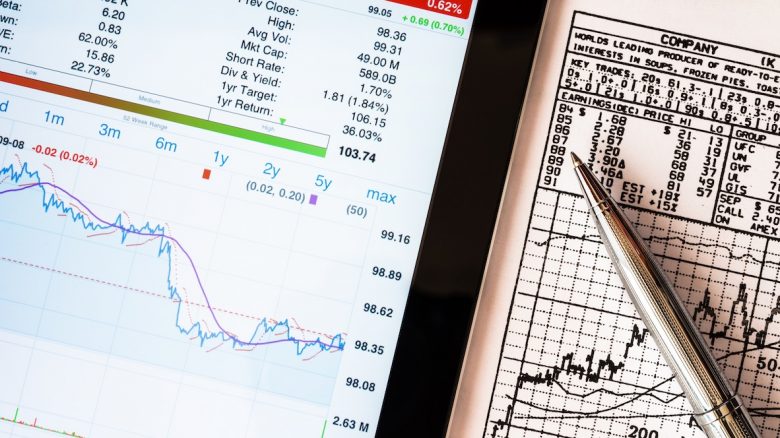Articles
Technical Analysis vs. Fundamental Analysis: Which is Best for Forex Trading?
Fundamental analysis is essential for long-term success in forex trading. Unlike technical analysis which focuses on charts and patterns, fundamental analysis considers real-world events and factors that influence the value of currencies.

Technical Analysis
vs. Fundamental Analysis: Which is Best for Forex Trading?
So you've decided to dive into the world of
forex trading. Congratulations, you're in for an exciting ride. Now comes the
tricky part - figuring out how exactly you're going to analyze the market to
make your trading decisions. The two most common techniques are technical
analysis and fundamental analysis. As a new trader, you're probably wondering
which method is better and will lead you to the biggest profits. The truth is,
there's no straightforward answer. Both technical and fundamental analysis have
their pros and cons, and the best approach for you depends on your trading
style and goals. In this article, we'll break down the key differences between
the two strategies so you can determine which is the best fit for your forex
trading needs. By the end, you'll have a solid understanding of both techniques
and be able to confidently choose a analysis method to help you make winning
trades.
Understanding the
Differences: Technical Analysis vs. Fundamental Analysis
When deciding whether to use technical or
fundamental analysis for forex trading, it's important to understand the key
differences between the two strategies.
Technical analysis focuses on price action
and charts to identify trading opportunities. It uses indicators like support
and resistance levels, trend lines, and candlestick patterns to determine when
to buy or sell a currency pair. The idea is that by analyzing historical price
movements, you can predict future price moves.
Fundamental analysis, on the other hand,
examines the economic, geopolitical, and other macro factors that influence the
value of currencies. Traders analyze news, events, interest rates, economic
data, and policies to determine if a currency is under or overvalued. The goal
is to buy undervalued currencies and sell overvalued ones.
Both strategies have their pros and cons.
Technical analysis is subjective and can generate false signals, while
fundamental analysis requires constant monitoring of complex global events.
However, when combined, these complementary methods can provide a more holistic
view of the forex market.
For new traders, technical analysis is often
easier to pick up and can yield short-term profits. But as you gain experience,
incorporating fundamental analysis will lead to more informed trading decisions
and better long-term results. The key is finding the right balance of
techniques that fit your trading style, skills, and goals. With practice and an
open mind, you'll be analyzing the forex market like a pro in no time!
Technical Analysis:
Using Charts and Indicators to Predict Price Moves
Technical analysis uses historical price
charts and indicators to determine trends and predict future price moves.
Unlike fundamental analysis which focuses on the underlying factors that drive
supply and demand, technical analysis is all about studying the actual price
behavior of a currency pair.
The key tools are price charts, which display
the open, high, low and closing prices over a specific time period, like daily,
weekly or monthly. You look for patterns and trends in the charts to determine
support and resistance levels, as well as trend lines. Things like double tops,
head and shoulders patterns or triangles can signal a potential reversal.
Popular indicators are tools like moving
averages, RSI, MACD and Bollinger Bands. For example, when a short-term moving
average crosses above a longer-term average, it can indicate an uptrend. An RSI
over 70 may suggest a currency is overbought, while under 30 means it's
oversold. Divergence between price and an indicator often signals a trend
change.
Of course, technical analysis is not
foolproof. There are false signals, and it doesn’t factor in fundamental events like news
releases. But for many traders, “ trend is your friend “ Technical analysis
allows you to identify and trade with the trend to maximize profits.
By carefully analyzing price charts and
indicators, you can determine key support and resistance levels, spot emerging
trends early, and find optimal entry and exit points. Technical analysis is a
powerful tool for any forex trader. With practice, you'll be spotting double
tops and reversals in no time!
Fundamental
Analysis: Analyzing the Overall Economy and Company Performance
Fundamental analysis examines the overall
health and performance of a country's economy and industries. Rather than
looking at charts and price patterns, fundamental analysts study economic
reports, industry trends, and company financials. For forex trading, fundamental
analysis helps determine whether a country's currency is under or overvalued
relative to another.
Some of the factors fundamental analysts
consider include:
·
Economic growth: If an
economy is expanding, interest rates may rise and the currency could strengthen.
If growth slows, rates may fall and the currency could weaken.
·
Trade balance: If a country
exports more than it imports (trade surplus), its currency may rise in value.
If it imports more than exports (trade deficit), its currency could fall.
·
Inflation levels: Higher
inflation often leads to higher interest rates, which can boost a currency.
Lower inflation or deflation can weaken a currency.
·
Government policies: Changes
in fiscal, monetary or trade policies could impact a country's currency. Tax
cuts or increased government spending may strengthen a currency, while
austerity measures may weaken it.
·
Industry health: The
performance of key industries like energy, finance, tourism, etc. can affect a
nation's economy and currency. Booming sectors signal a strong economy while
struggling industries suggest weakness.
·
Corporate earnings: When
companies report increasing profits and sales, it indicates a robust economy
and the currency may rise. Disappointing results or outlooks can have the
opposite effect.
While fundamental analysis provides important
context, it may not predict short-term price movements. Technical analysis can
complement fundamentals by identifying trading opportunities and trends in
real-time. Using both methods together gives you the most comprehensive
analysis for making forex trading decisions.
Why Fundamental
Analysis Is Essential for Long-Term Forex Success
Fundamental analysis is essential for long-term success in forex trading. Unlike technical analysis which focuses on charts and patterns, fundamental analysis considers real-world events and factors that influence the value of currencies.
Economic
indicators
Fundamental analysts closely monitor economic
indicators like GDP, inflation, interest rates, trade balances, and employment stats.
Strong economic growth and stable prices usually mean a currency will
strengthen over time. Weak growth and high inflation, on the other hand, often
lead to currency devaluation.
Government
policy
Government economic and monetary policies
also significantly impact exchange rates. Things like increasing or decreasing
interest rates, printing more money, reducing taxes or increasing government
spending can strengthen or weaken a nation's currency. Analysts keep a close
eye on central bank activities and announcements.
Geopolitical
events
Political events such as wars, conflicts,
elections, treaties, and alliances also sway exchange rates. Currencies of
nations viewed as politically or economically unstable are riskier, so
investors often move money into safer havens during times of geopolitical
turmoil.
In summary, fundamental analysis considers
the overall health and stability of a nation's economy as well as its
geopolitical situation. While day traders may rely more on charts and technical
indicators, long-term forex success depends on understanding these broader
fundamental drivers of currency valuations. Fundamental analysis helps identify
currencies that are undervalued or poised to strengthen over time due to strong
economic fundamentals and a stable political environment.
Technical analysis and fundamental analysis can both be useful for forex trading. For the best results, consider combining both methods to identify short-term opportunities and long-term trends. Focusing solely on one approach could lead to missed opportunities or ill-informed trading decisions. A balanced analysis of technical factors as well as economic and political fundamentals will serve you well in forex markets.
Technical Analysis
vs. Fundamental Analysis: Which Approach Is Best for Forex Prop Firms?
When it comes to forex trading, you have two
main options for analysis to guide your decisions: technical analysis or
fundamental analysis. Which approach is best for forex prop firms comes down to
your trading style and preferences.
Technical analysis involves analyzing
statistical trends gathered from trading activity, such as price movement and
volume. By identifying patterns in price charts and other metrics, you aim to
predict future price movements and market trends. This approach is best if you
prefer a fast-paced, quantitative trading style.
Fundamental analysis, on the other hand,
focuses on analyzing the factors that influence the underlying economy and
asset to determine its intrinsic value. This includes things like economic
indicators, financial statements, supply and demand, and market sentiment.
Fundamental analysis is best if you prefer a long-term, value-based trading
style.
For forex prop firms, a combination of both
technical and fundamental analysis may provide the most effective trading
strategies. Technical analysis can help identify short-term opportunities to
capitalize on price fluctuations, while fundamental analysis provides insight
into long-term market trends and the stability of currencies. Using a blend of
quantitative metrics and qualitative data provides the most well-rounded view
of the forex market.
In the end, the best approach for you depends
on your trading goals, style, and preferences. Forex prop firms aim to maximize
profits, so the analysis method that helps you most accurately predict price
changes and spot opportunities in the market will lead to the best results. Try
different techniques, do extensive research, and find what works for your
unique trading strategy. With the right analysis approach, you'll be well on
your way to success in the forex market.
Conclusion
So in the end, both technical and fundamental
analysis have their pros and cons for forex trading. Neither approach is
inherently better or worse - it comes down to your personal trading style and
preferences. If you're more quantitatively inclined and prefer looking at
charts and indicators to spot trends, technical analysis could be a great fit.
If you're more interested in analyzing economies and monetary policies to determine
currency valuations, fundamental analysis may suit you well.
The best approach is often to use a
combination of both technical and fundamental analysis. Look at the big picture
to determine which currencies are under or overvalued, then use technical analysis
to time your entries and exits. By leveraging the strengths of multiple
strategies, you'll give yourself the best chance of success in the forex
market. So don't limit yourself - keep exploring and find what works for you!
With practice and persistence, you'll be well on your way to forex trading
mastery.

